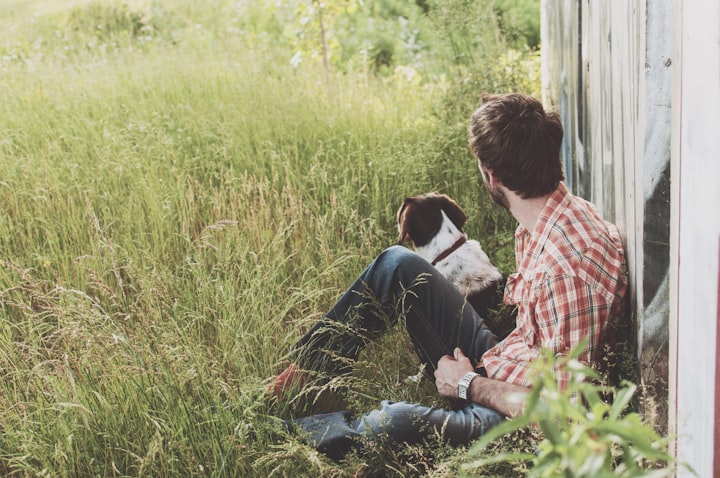dogs reactions to being adopted
Saving a Life: How Dogs Reactions to Being Adopted Can Change Your Perspective

Most people have never stopped to think about how a dog may feel when it is adopted by a family. The dog has likely been abandoned or taken to a shelter after its previous family decided they no longer wanted it. When the dog is finally adopted, it may have mixed feelings about its new family. The dog may feel happy to have a new home, but also may be nervous about its new surroundings and whether or not it will be loved.
Many people believe that dogs can sense when they are about to be adopted and may start to act differently in order to make themselves more adoptable. For example, a dog may start to wag its tail more or become more playful in order to catch the attention of potential adopters. However, once the dog is actually adopted, it may start to act differently around its new family. The dog may become more reserved and may not show as much enthusiasm as it did at the shelter.
While it may be difficult to think about how a dog feels when it is adopted, it is important to remember that the dog is likely going through a lot of changes. The dog may be feeling happy and relieved to have a new home, but may also be feeling scared and unsure about its
1. The dog flu is a highly contagious respiratory infection in dogs.
2. Symptoms of the dog flu include coughing, sneezing, fever, and runny nose.
3. The dog flu can be deadly, especially to puppies and older dogs.
4. The best way to protect your dog from the flu is to get them vaccinated.
5. You should talk to your veterinarian if you're concerned about the dog flu and whether or not your dog is at risk.
1. The dog flu is a highly contagious respiratory infection in dogs.
The dog flu is a highly contagious respiratory infection in dogs. It is caused by two different viruses: influenza A H3N8 and influenza A H3N2. Both of these viruses are able to infect dogs, but H3N8 is the most common. The dog flu is most often seen in dogs that are young, old, or have a weakened immune system. Symptoms of the dog flu include coughing, sneezing, fever, and runny nose. The disease can be fatal, but most dogs recover with proper treatment.
2. Symptoms of the dog flu include coughing, sneezing, fever, and runny nose.
The dog flu is a serious respiratory infection that can be deadly for dogs. Symptoms of the dog flu include coughing, sneezing, fever, and runny nose. The best way to protect your dog from the flu is to get them vaccinated. If you think your dog may have the flu, take them to the vet immediately.
3. The dog flu can be deadly, especially to puppies and older dogs.
The dog flu can be deadly, especially to puppies and older dogs. It is important to be aware of the symptoms of the dog flu and to get your dog vaccinated against it. If you think your dog may have the flu, take them to the vet immediately.
4. The best way to protect your dog from the flu is to get them vaccinated.
One of the best ways to protect your dog from the flu is to get them vaccinated. Vaccinations help to build immunity against the virus, and can help to prevent your dog from getting sick. There are a few different vaccines available, and your veterinarian can help you to choose the best one for your dog. In addition to vaccinations, you can also help to protect your dog from the flu by giving them plenty of rest, keeping them away from other sick dogs, and making sure they have plenty of fresh water to drink.
5. You should talk to your veterinarian if you're concerned about the dog flu and whether or not your dog is at risk.
If you're concerned about the dog flu, you should talk to your veterinarian. Your vet can help you determine if your dog is at risk and if they recommend any vaccinations or other precautions.
Dog flu is a relatively new phenomenon, and not all dogs are at equal risk. Some breeds are more susceptible than others, and even within breeds, some dogs may be more likely to contract the flu or to have more severe symptoms.
Your veterinarian is the best resource for information on the dog flu and how to protect your dog. They can help you assess your dog's risk and recommend the best course of action.
While there are many benefits to adopting a dog from a shelter, the most important one is the difference you can make in that dog's life. Giving a dog a second chance not only improves their quality of life, but can also change your perspective and outlook on life. Adopting a dog is one of the most rewarding things you can do, and something that everyone should experience.
About the Creator
Salmoun DANIEL
mr dog is a dog blog that covers everything from health and nutrition to exercise and training. There is also a strong focus on dog-related news and current events.






Comments
There are no comments for this story
Be the first to respond and start the conversation.